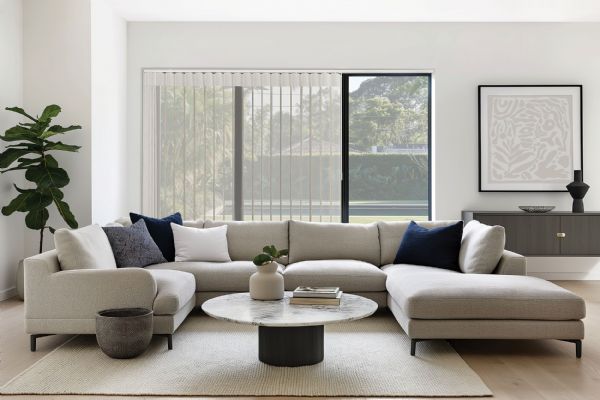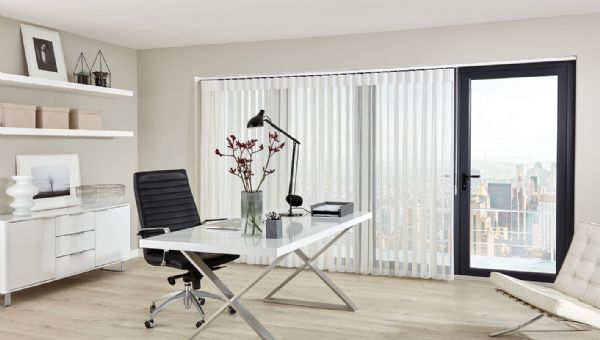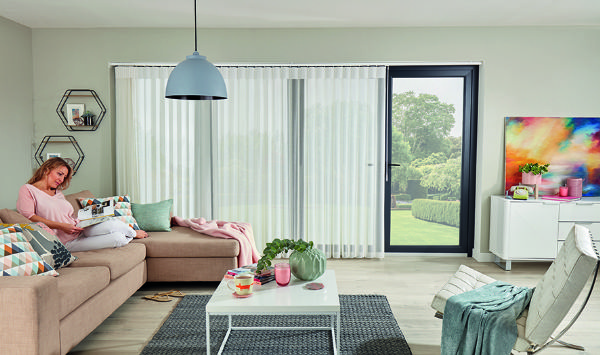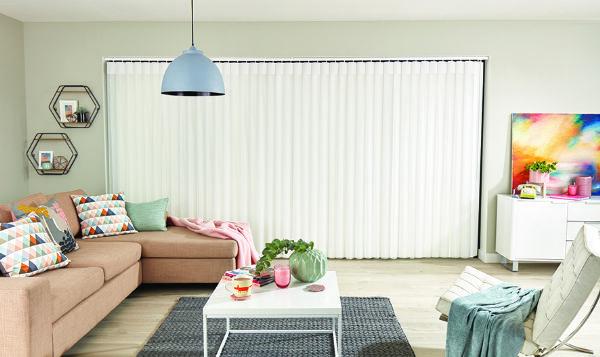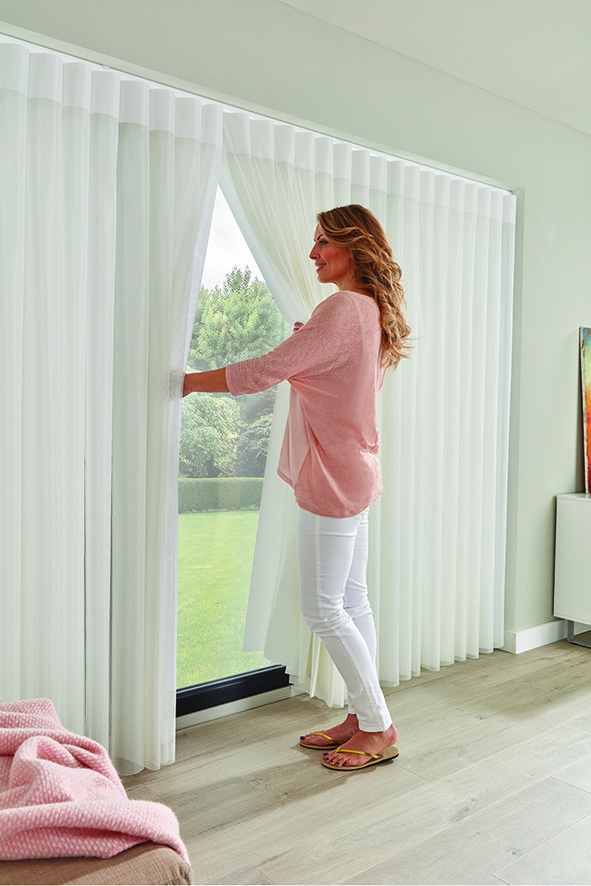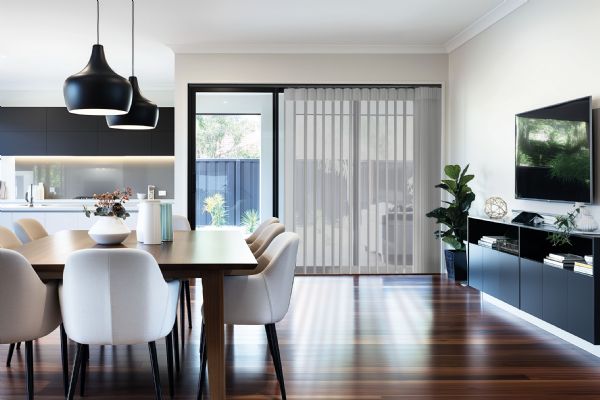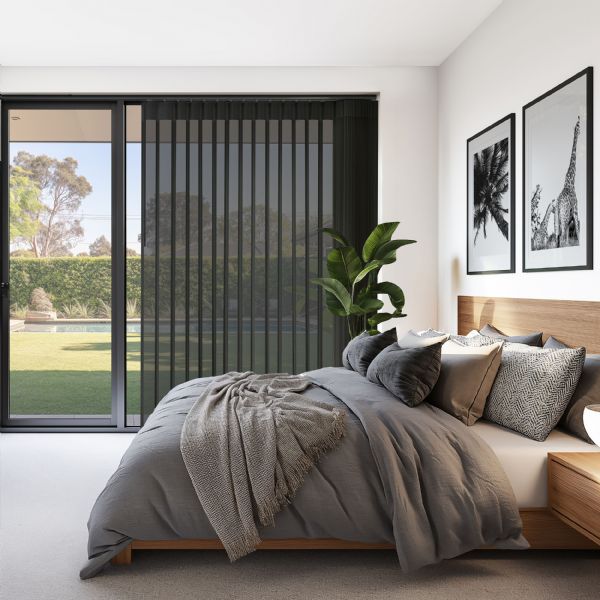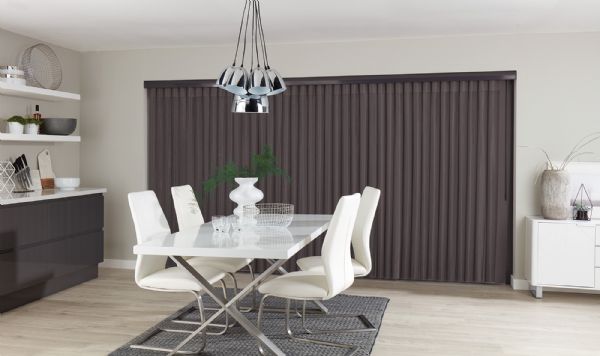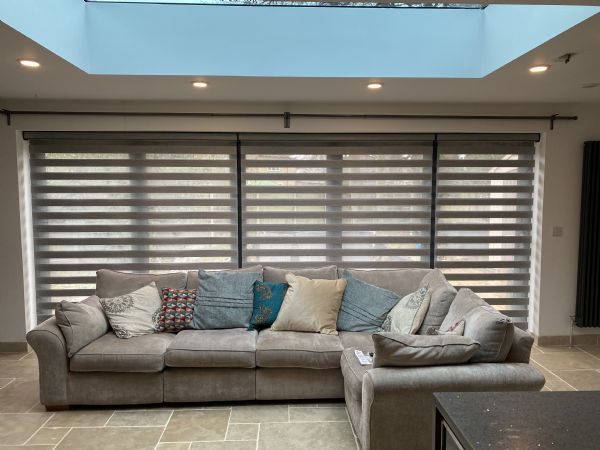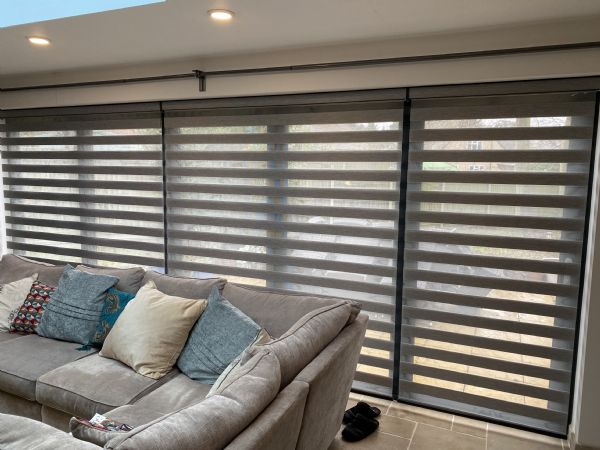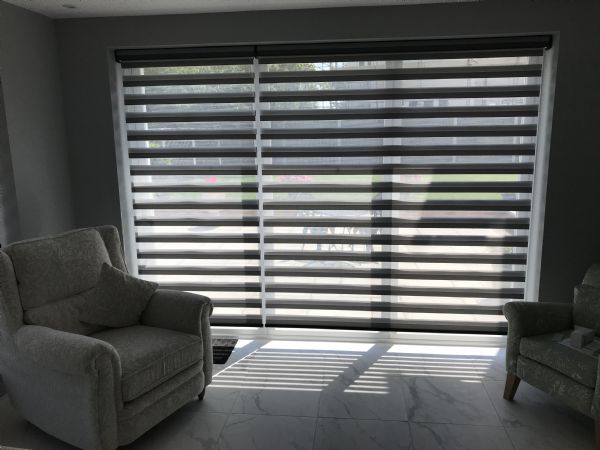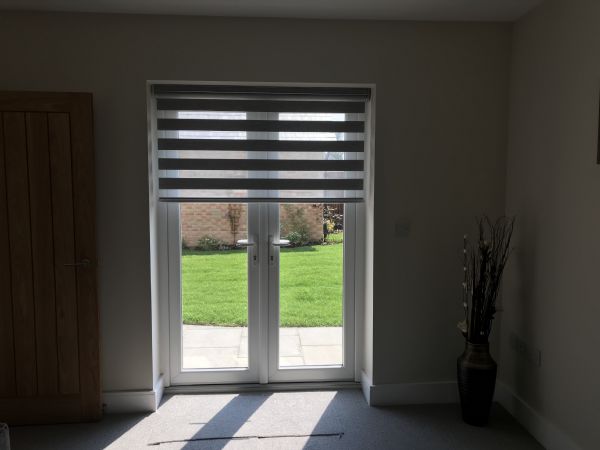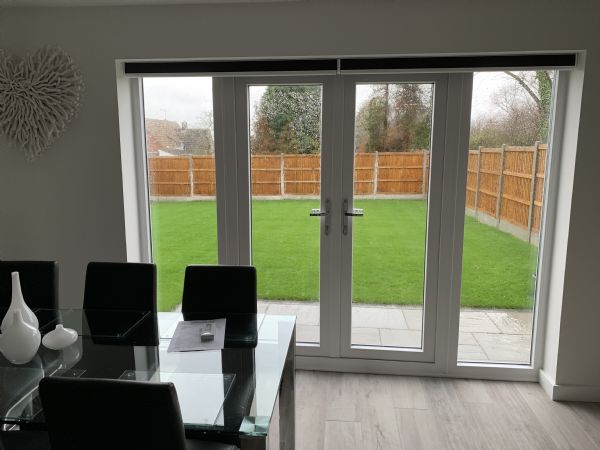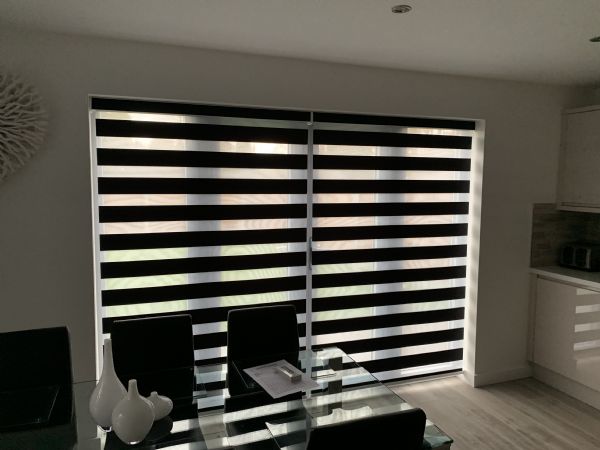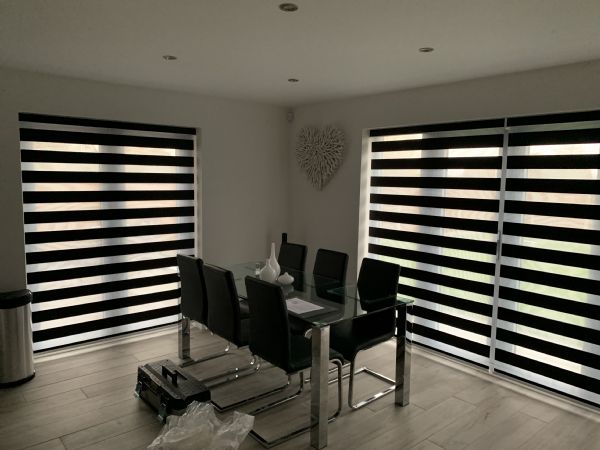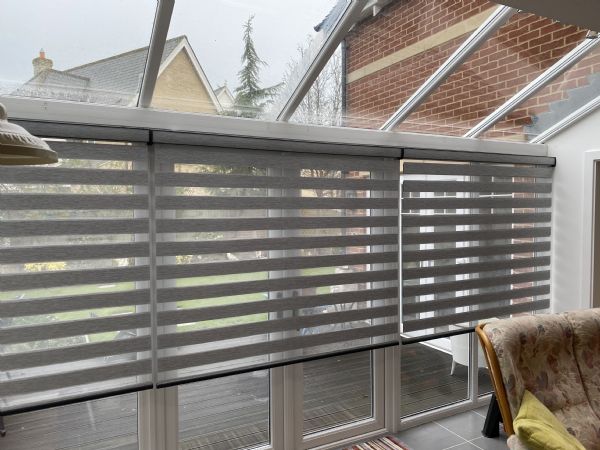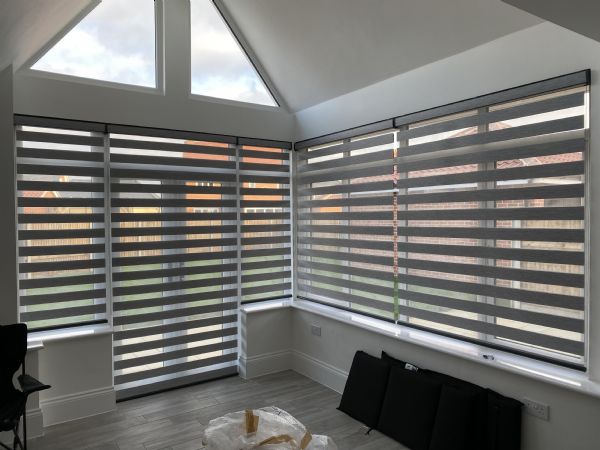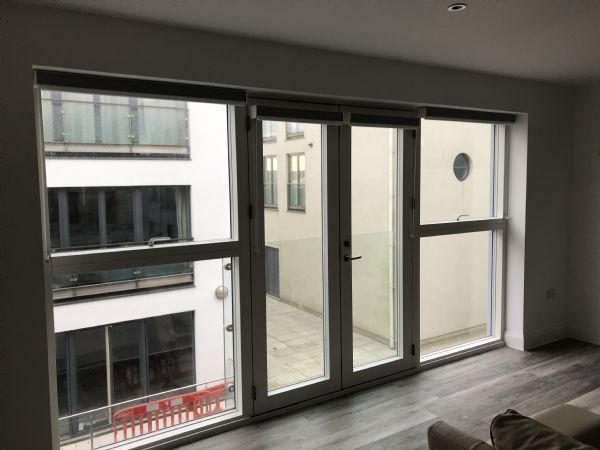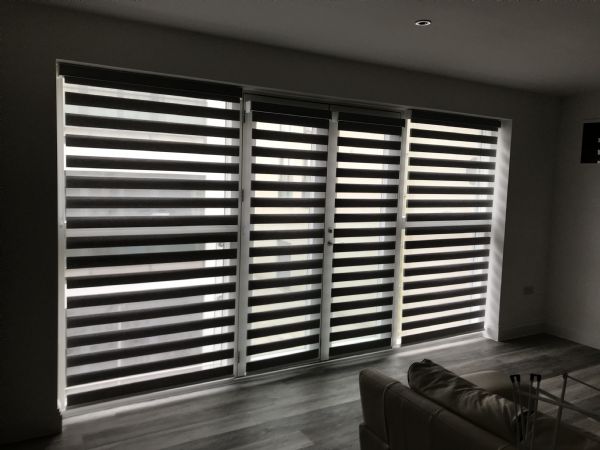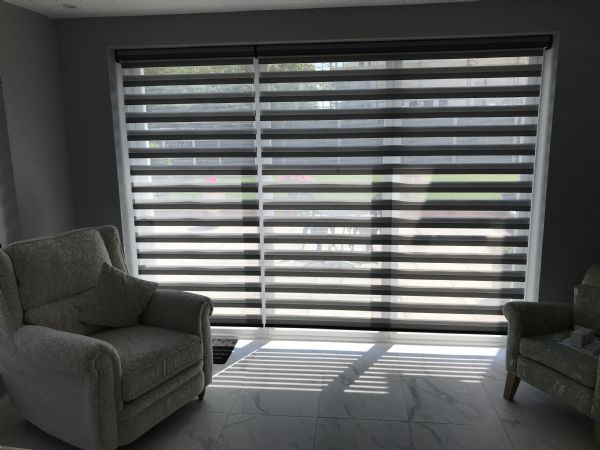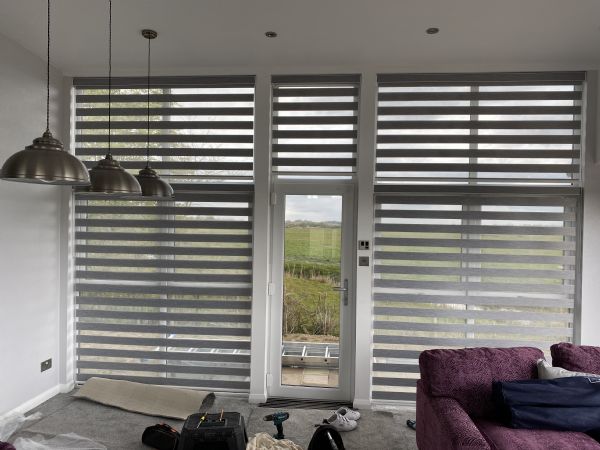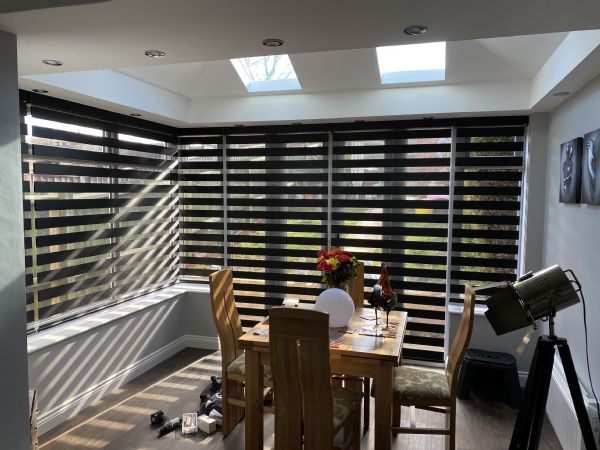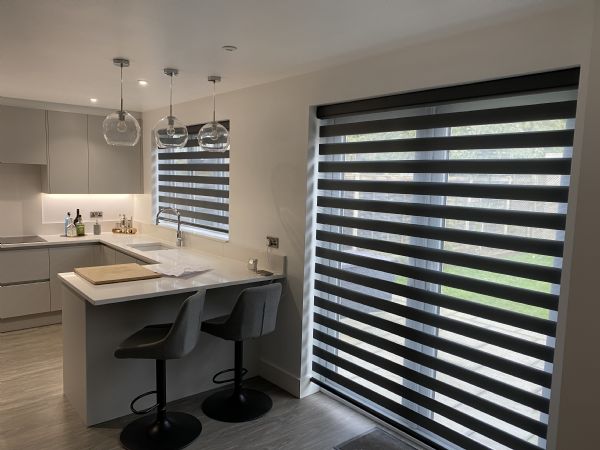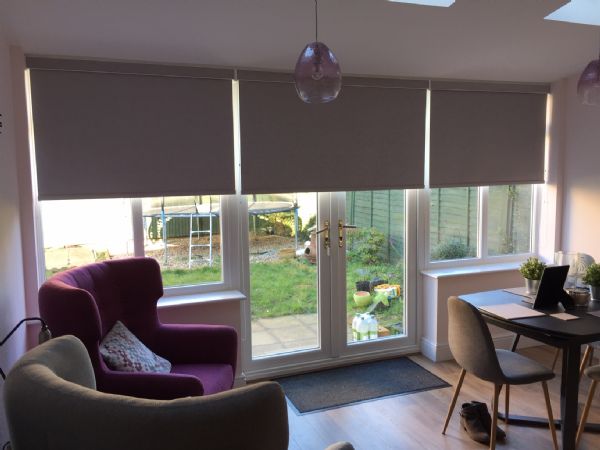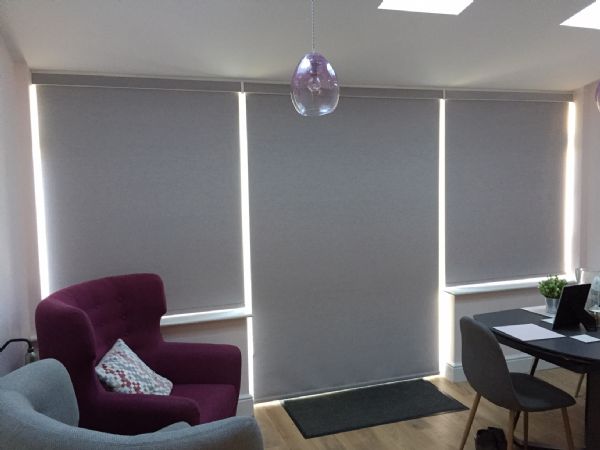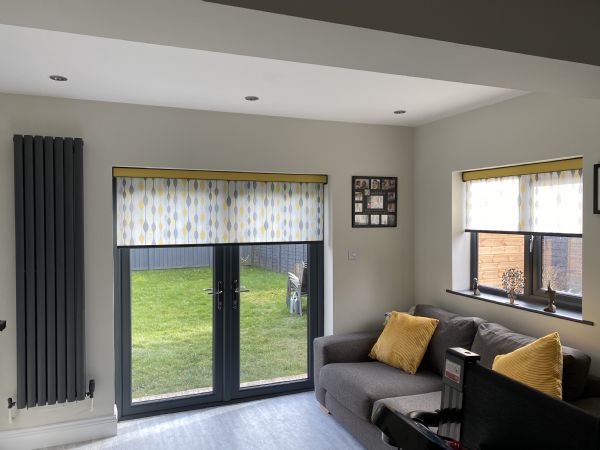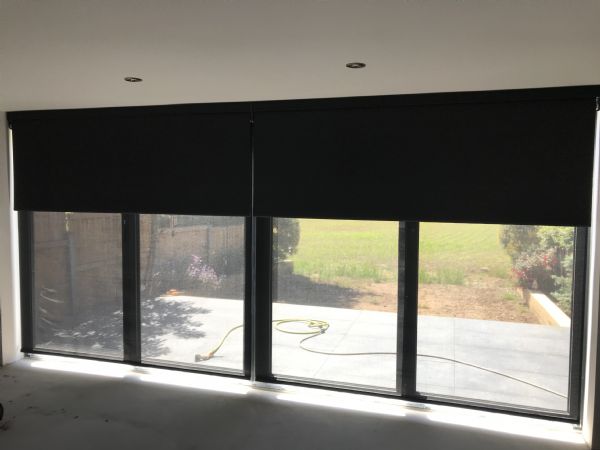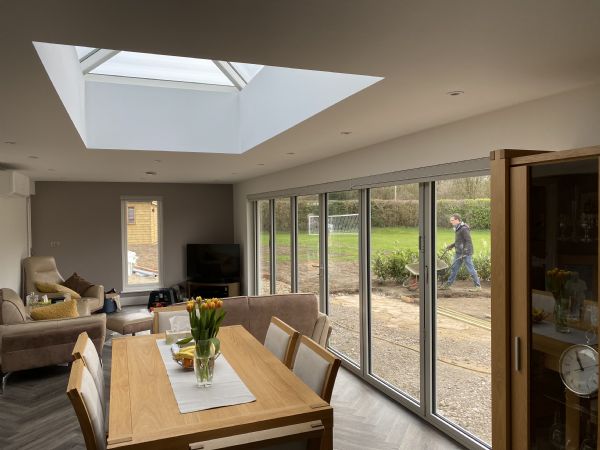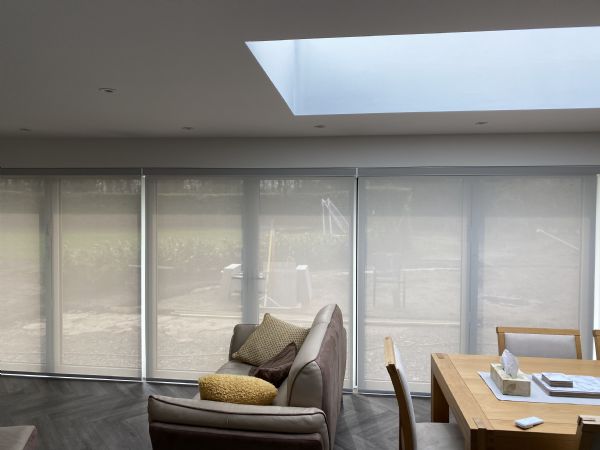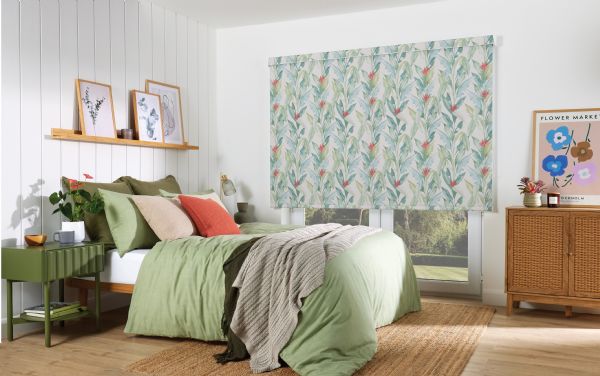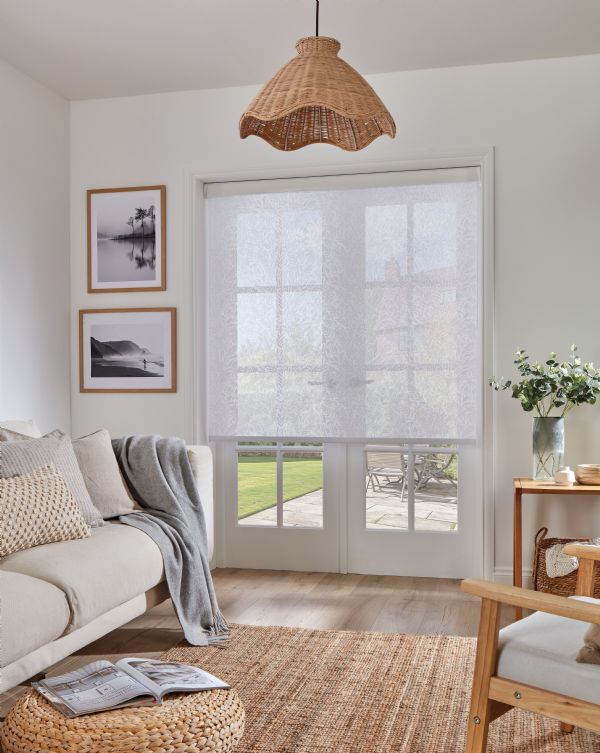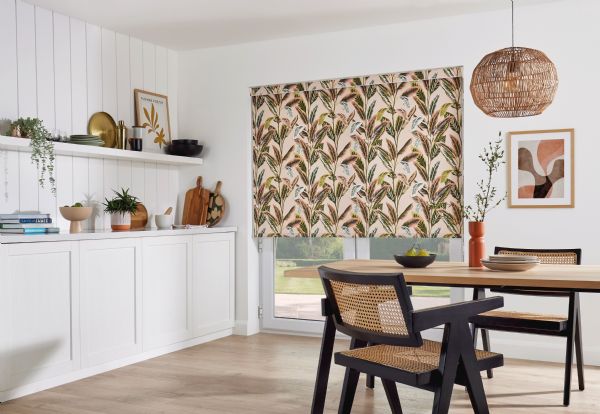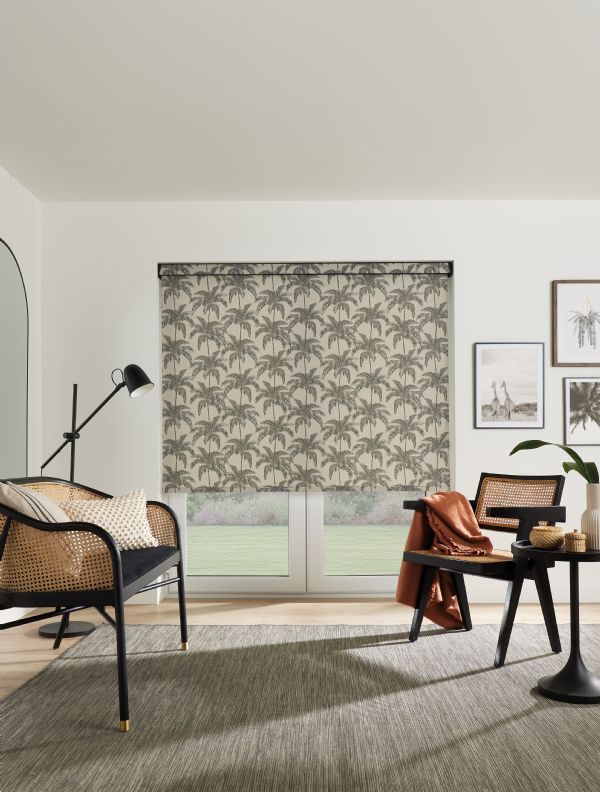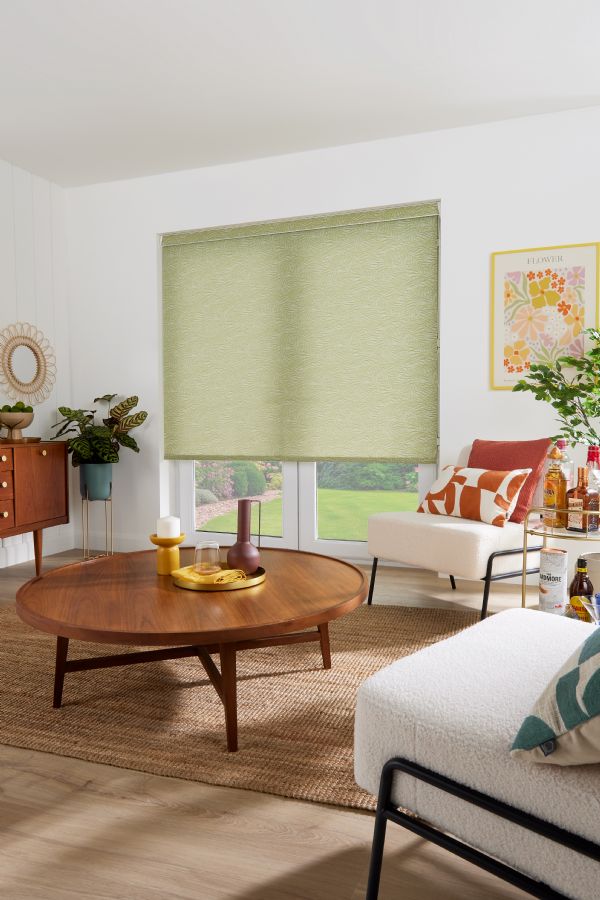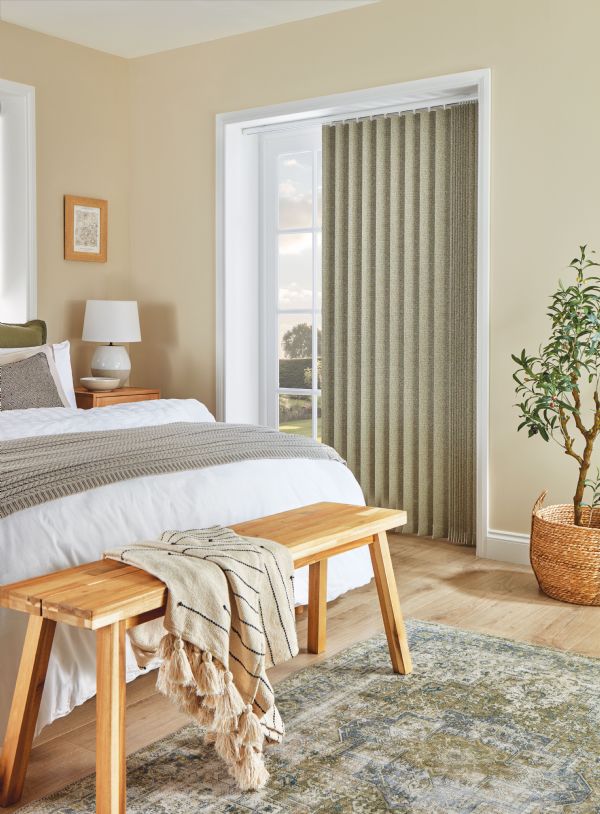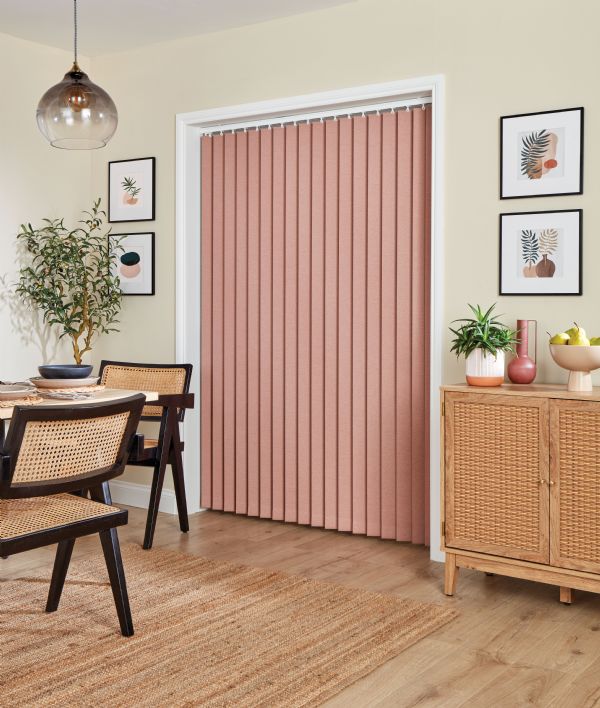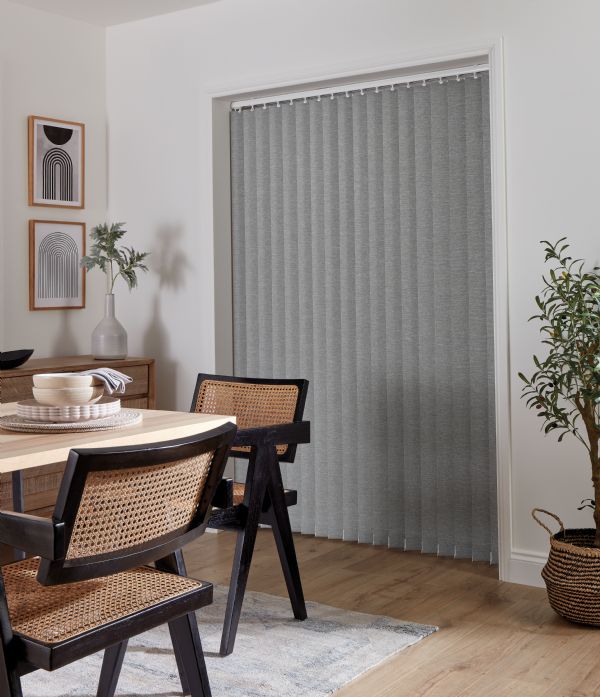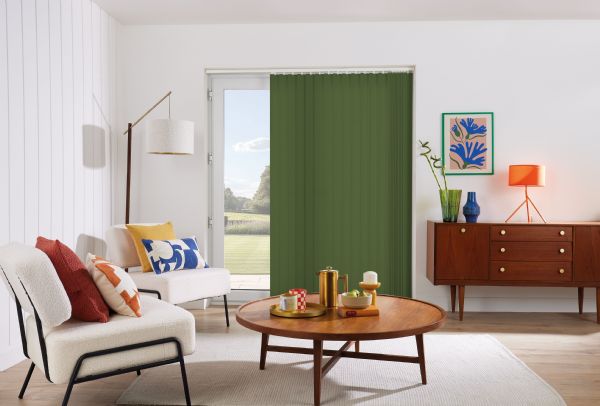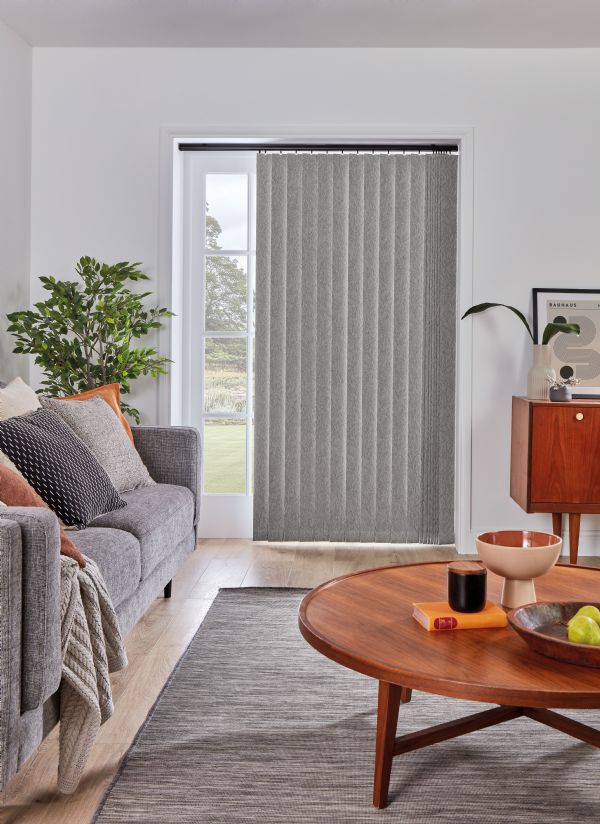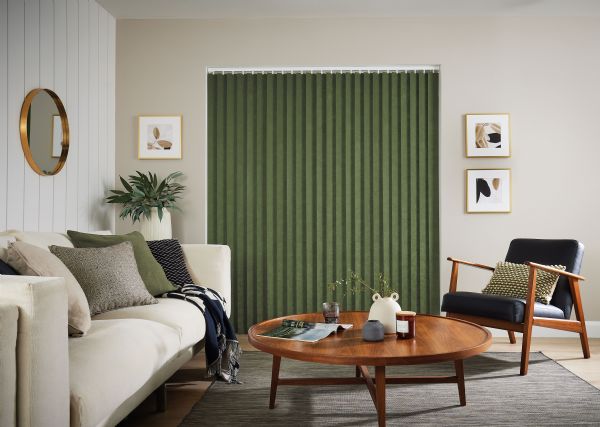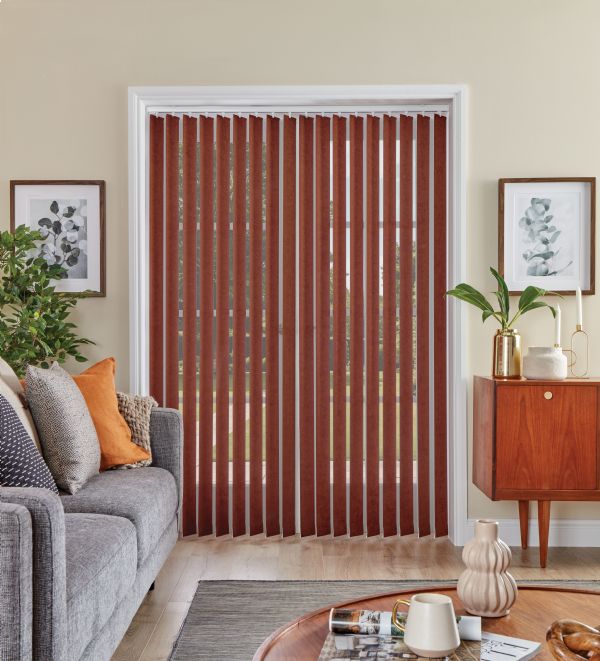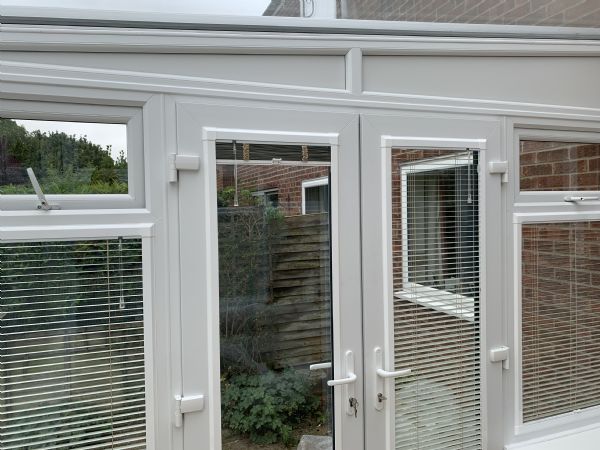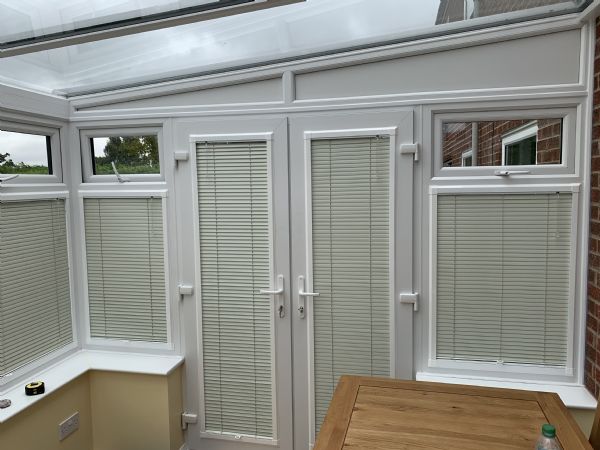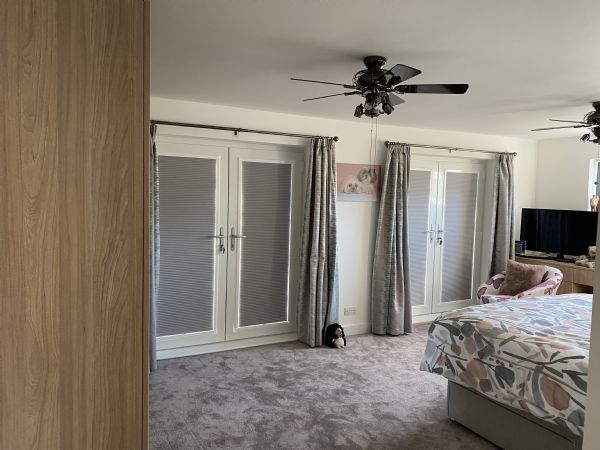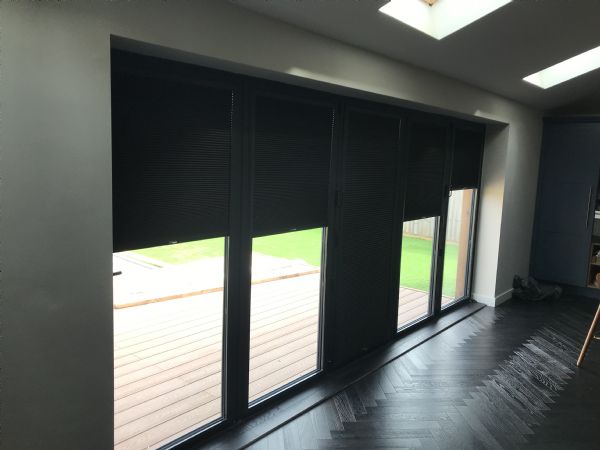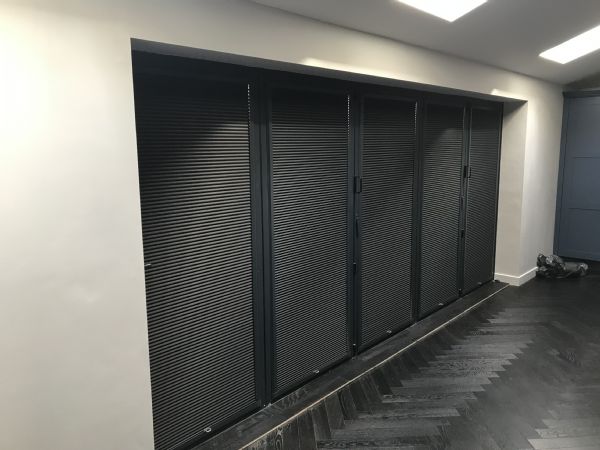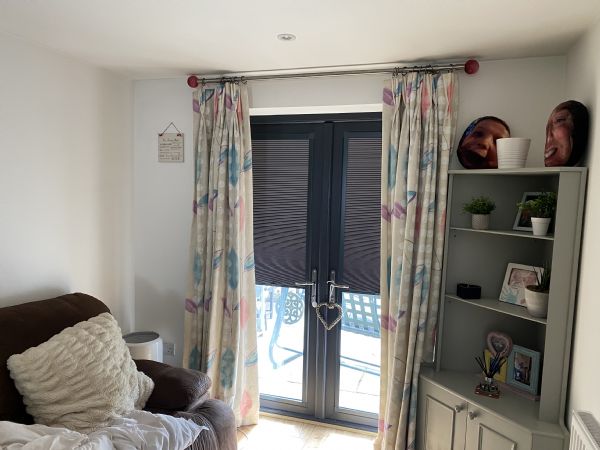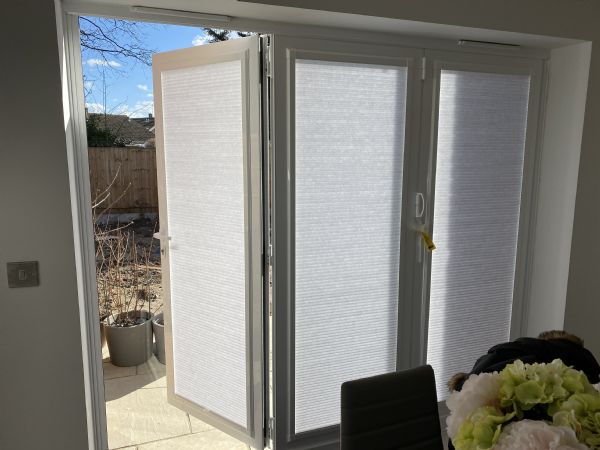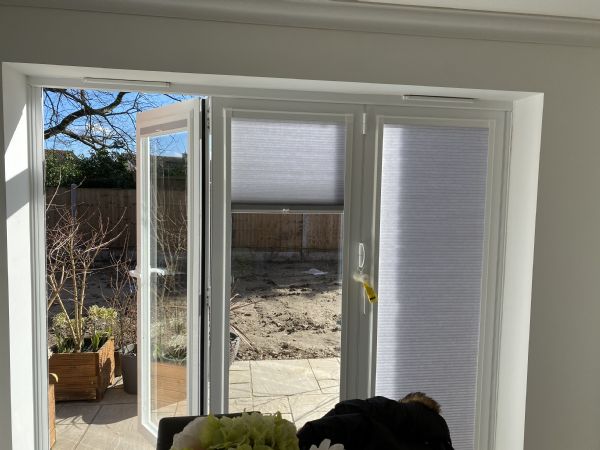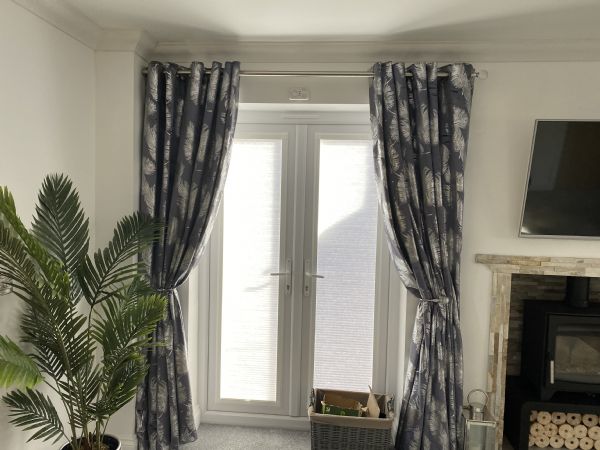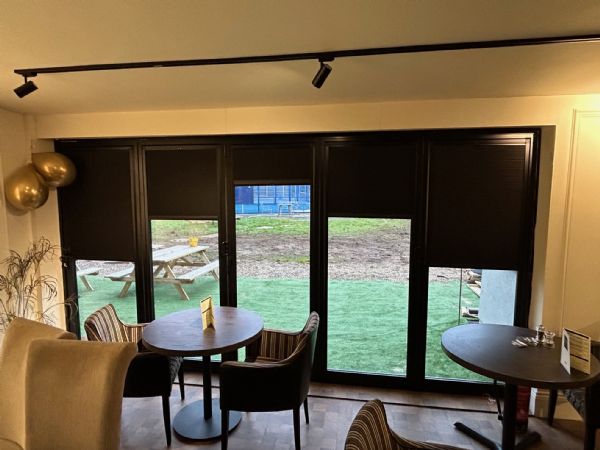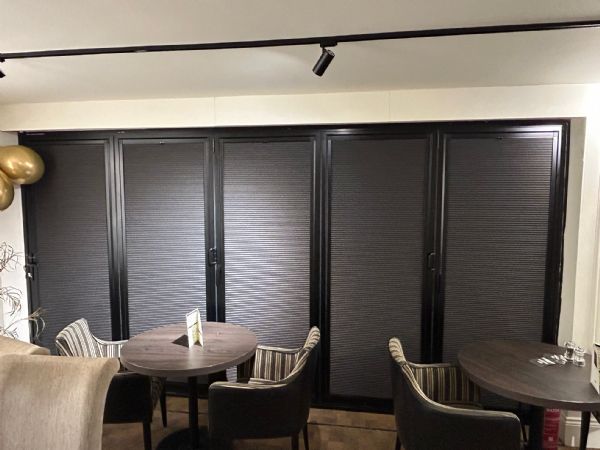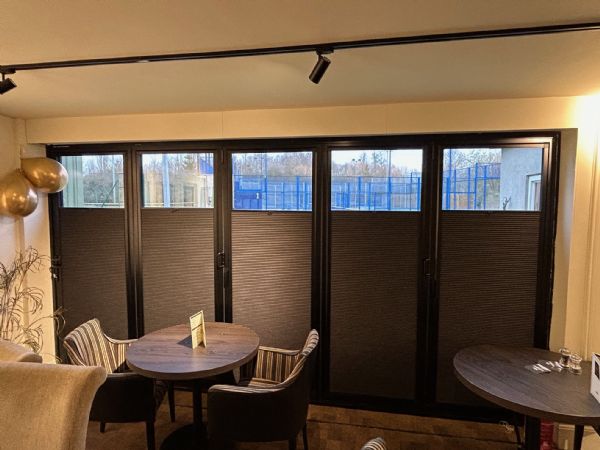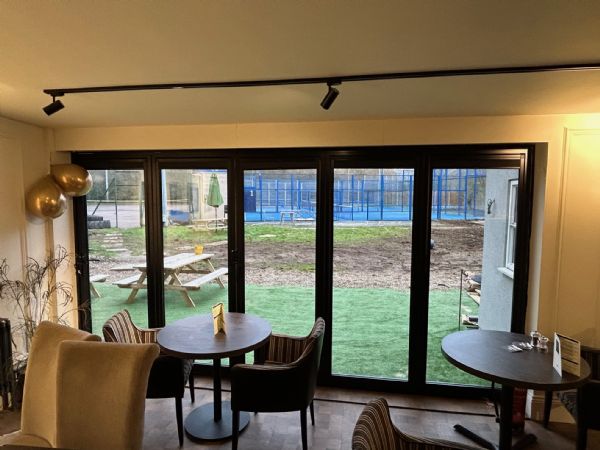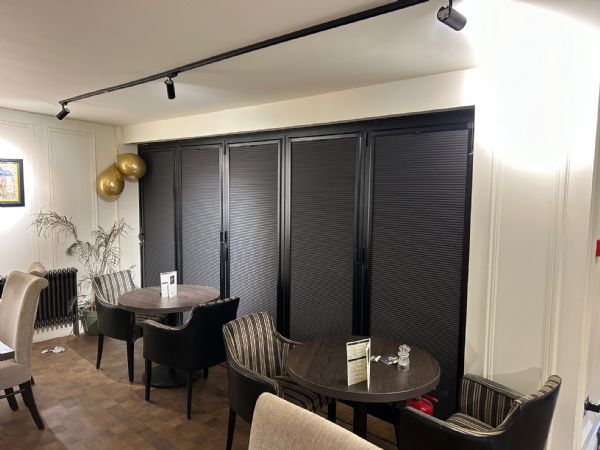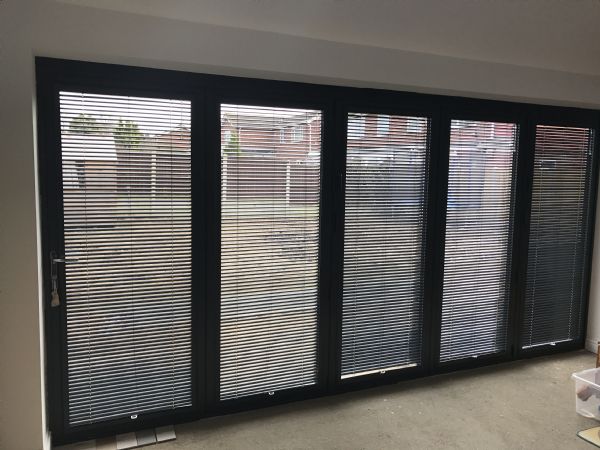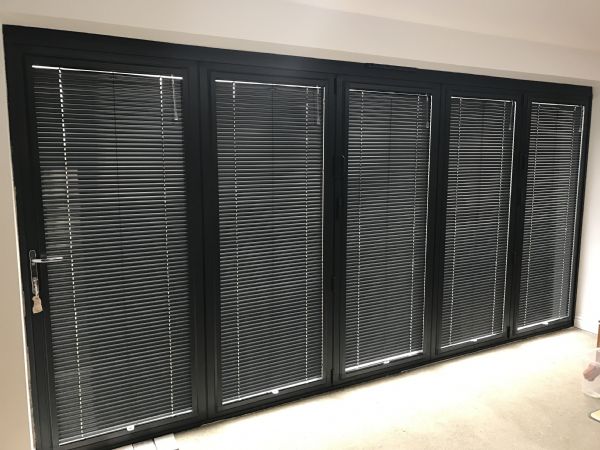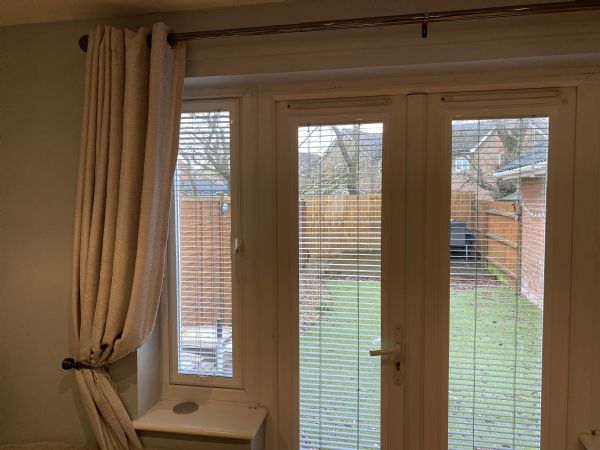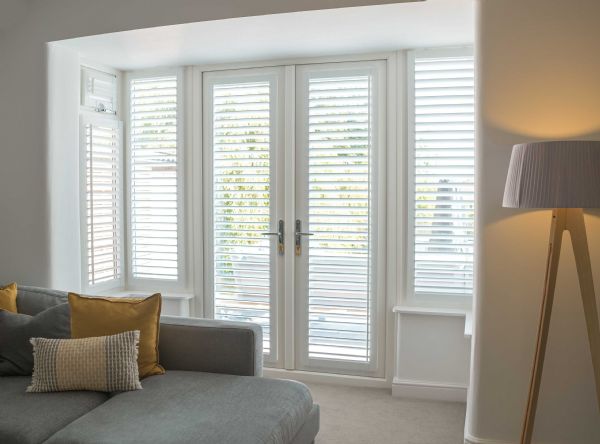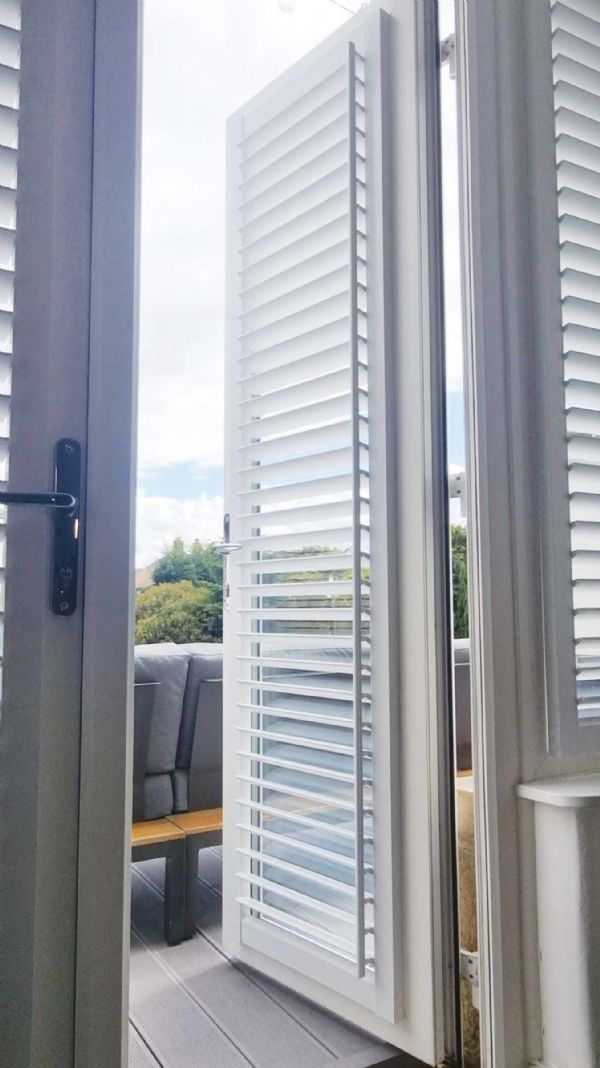Blinds to cover French doors, bi-folding, sliding doors
Grab a coffee, because dressing your doors properly isn’t a quick conversation. In our experience, most people make the wrong choice of product for their doors. Usually, we encounter customers who like a particular product but haven’t considered its functionality. Ultimately, our goal is for you to make an informed decision by choosing a product that suits your needs.
It all begins with answering a simple question: “Why do you want to put blinds across your doors?”
Understanding the reasons behind your desire to install blinds on your doors is the foundation for comprehending how your choice will function.
The common reasons given are:
Daytime Privacy
You can see out; you make it difficult or impossible for people to see in, during daylight hours
Nighttime Privacy
You can shut the doors for total privacy at night
Fading
You have flooring and/or furniture that needs to be protected from sun damage
Heat Gain
Your room gets too hot
Heat Loss
You are losing heat through the doors and/or have drafts
Sun glare
You struggle on sunny days with glare
It’s crucial to be clear and concise in your responses to these questions, as they’ll swiftly eliminate some products. You might make different choices, but at least you’ll make them knowing all the pros and cons.
OTHER FACTORS TO CONSIDER
What direction do you face?
North-facing elevations receive the least amount of sunlight and natural daylight.
East-facing elevations only experience sunlight during the early morning hours.
South-facing elevations receive the most sunlight.
West-facing elevations receive the most sunlight, depending on the time of year, towards the late afternoon or early evening.
High Traffic vs Low Traffic Doors
Doors in a kitchen area compared to doors in a lounge are more likely to experience differing levels of foot traffic. Do you have alternative doors to the back garden? Are your doors used a lot?
Children and Pets
Do you have children and pets using these doors?
Can the blinds you are thinking about fit on or across your doors?
There is no one single answer to this although we do provide some guidance notes below.
Knowing the exact width of your door, is useful. If you can, measure your door width properly. If you think its a 5 metre opening, 5 metres is 5000mm. If your actual opening is 5037mm, then it is not a 5 metre opening!!! It is important to know your door width, to within just a few MM. Don’t presume, measure it properly to have an exact understanding of what limitations you might face.
Ultimately, once we’ve seen your doors we can easily advise you on what can and cannot be installed along with the why!
Breeze & Doors open
The functionality of a blind can change, once you leave doors open, especially in summer months where there are few days without a moderate to strong breeze.
SO MUCH TO THINK ABOUT
Before delving into the various solutions and the comments associated with each, let’s explore two real-life examples. These are actual conversations we’ve had with clients.
After these, we’ll delve into the different types of blinds and their pros and cons.
Example 1
For our case study, we meet Mr. and Mrs. Smith, who recently renovated their kitchen. They have a five-panel bi-folding door in the space. They’ve conducted some limited research and have chosen Perfect Fit Pleated blinds. One notable aspect of their kitchen is that it’s not overlooked by another property. The surrounding area is fenced in, ensuring they have adequate privacy during the day. Their doors face due south.
Our first step was to confirm if Perfect Fit Pleated blinds would be suitable for their doors, which they were.
When asked about their choice of Perfect Fit pleated blinds, their response was straightforward: they appreciated the neatness and aesthetic appeal of the product.
As a company, we take pride in ensuring we deliver the best possible service, which means aligning our products with customer needs.
We conducted an interview to understand their requirements for blinds on their doors. They mentioned an issue with harsh glare while sitting at their kitchen table and excessive heat buildup in the kitchen during hotter days. We also asked about their frequency of opening the doors during warmer weather. They indicated that they opened the doors frequently, weather permitting.
Additionally, they had a pet dog and an alternative back garden door. However, since the bi-fold doors were installed, they had changed their routine to using those doors to let the dog in and out of the garden. They also had two young children, so traffic through the doors was high during the summer months.
We shared our opinion on the functionality of their choice of Perfect Fit Pleated blinds, focusing on their practicality rather than aesthetics.
We explained that Perfect Fit blinds are attached to the doors, so if the door is open, the blind is no longer functional. Since they opened the doors frequently during warm weather, when the sun’s glare was at its worst, they would not be able to effectively reduce heat and glare.
Their new habit of using the doors to let the dog in and out during winter months, would inevitably lead to opening the doors when it was raining, potentially damaging the blind over time unless they were prepared to use their other back door and change their habits.
When sitting at the table, they would not be able to reduce the glare of the sun unless they closed the doors and pulled down the blinds to a sufficient level.
The conversation with the customer then shifted to the winter months. The doors had been completed in May, just as the temperatures began to rise. The new open-plan kitchen area was quite large, and they hadn’t considered their specific requirements for different seasons. While they had installed underfloor heating, they soon realised keeping the heat in during the winter was important. We delved deeper into their preferences, and they expressed their desire to keep the door area completely open during the day, whenever possible, rather than having blinds permanently visible. We also discussed their nighttime needs, and they indicated that they liked the doors to look cozy at night and be closed off.
Based on this comprehensive understanding of their goals, we presented them with two options. Doors often involve some form of compromise, and the best choice for you is to grasp those compromises and consider how you’ll live with the product throughout four different seasons.
The first product we discussed was Allusions. It would fulfil all their requirements, except for the winter months. While the blind can be pulled back to one side, the compromise here is their preference for a completely “clear” door area whenever possible. This would involve stacking material to one side during the winter months. However, the blind would provide excellent protection against glare, retain heat during the winter, and since it can be walked through, it didn’t impede how they used the door.
The second product we discussed was roller blinds and also duo rollers. The weakness of rollers is to consider damage to materials if the the doors are open and there’s a strong breeze. This is why we also discussed duo rollers, where we would use screen material as the daytime product, which is capable of handling a door being left open. Screen blinds on their own have one weakness, which is they are transparent at night from outside looking in.
Duo rollers, the more expensive option, provided a daytime solution and a separate one for night. When the blinds were fully up, they were discreetly hidden in the cassette boxes, leaving the door area completely open and maximising natural daylight.
While we quoted for all these options, their final choice was to install just the screen roller blinds, at least initially, and these were fully motorised.
We divided the bi-folding doors as follows: one blind to cover three panels, and the other blind to cover two panels.
The screen roller offered maximum light and a view out while keeping the heat down. Since they tended to open the first two doors the most, the other blind was left to cover the 3 doors not opened so frequently. This meant that in extreme heat, they kept the kitchen area cool for most of the door area. The motorisation allowed them to go outside and stay outside, shutting the other blind behind them with the remote control.
During the night hours, if pulled down from inside the property, the screen rollers appeared solid and non-transparent. However, if you went outside into the garden, you would clearly see into the kitchen area if there were artificial lights on inside the property.
Their decision was based on the premise that Mrs. Smith, who was slightly less comfortable with not being able to fully close the door area at night, had the option to convert these to duo rollers. We could install non-transparent blinds into the same door opening if required. They wanted to test out the daytime solution first before committing to having night blinds as well.
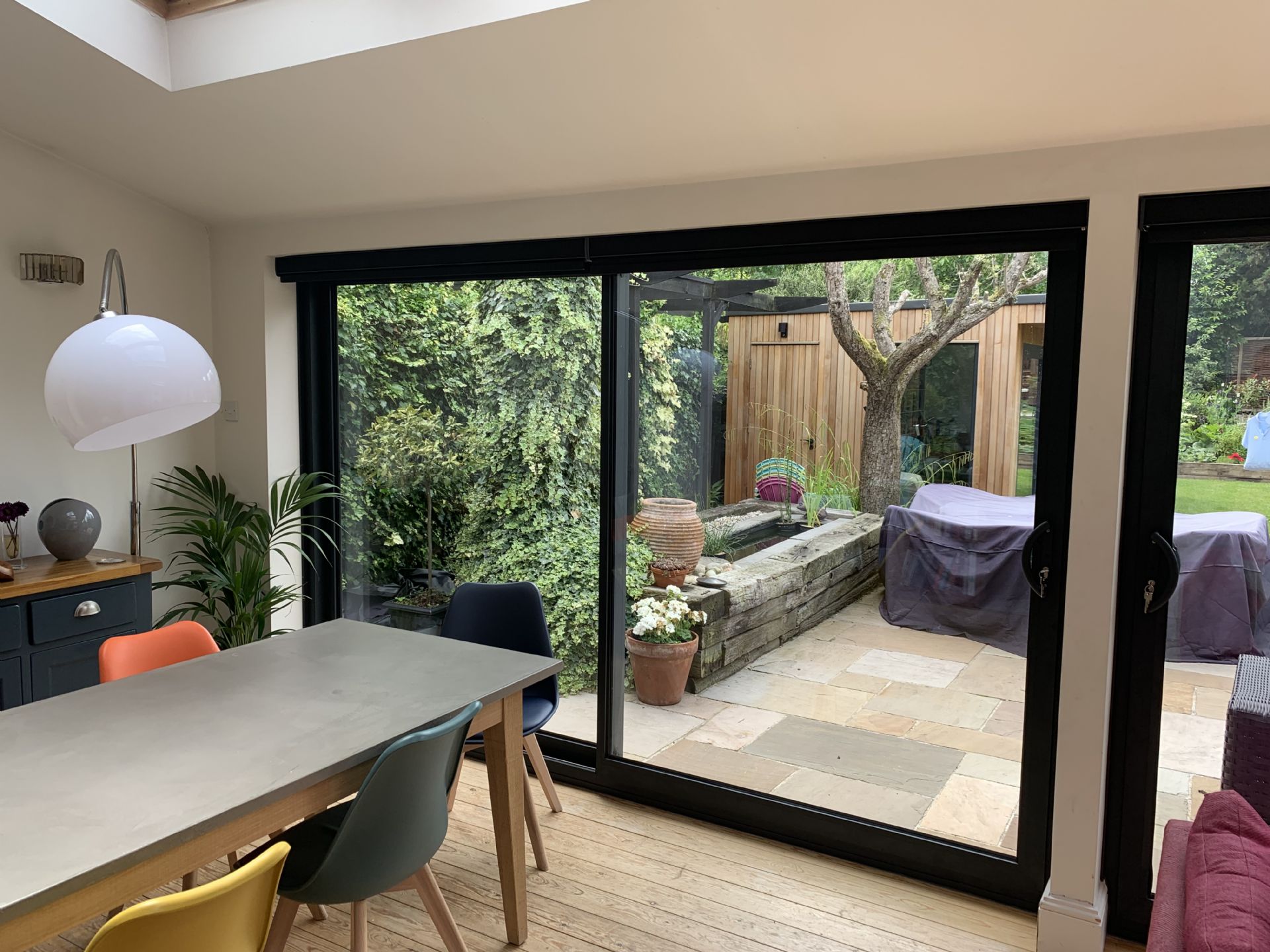
Screen roller on sliding doors - with the chosen colour against the anthracite doors, the blinds are discretely hidden in cassette boxes that match the doors
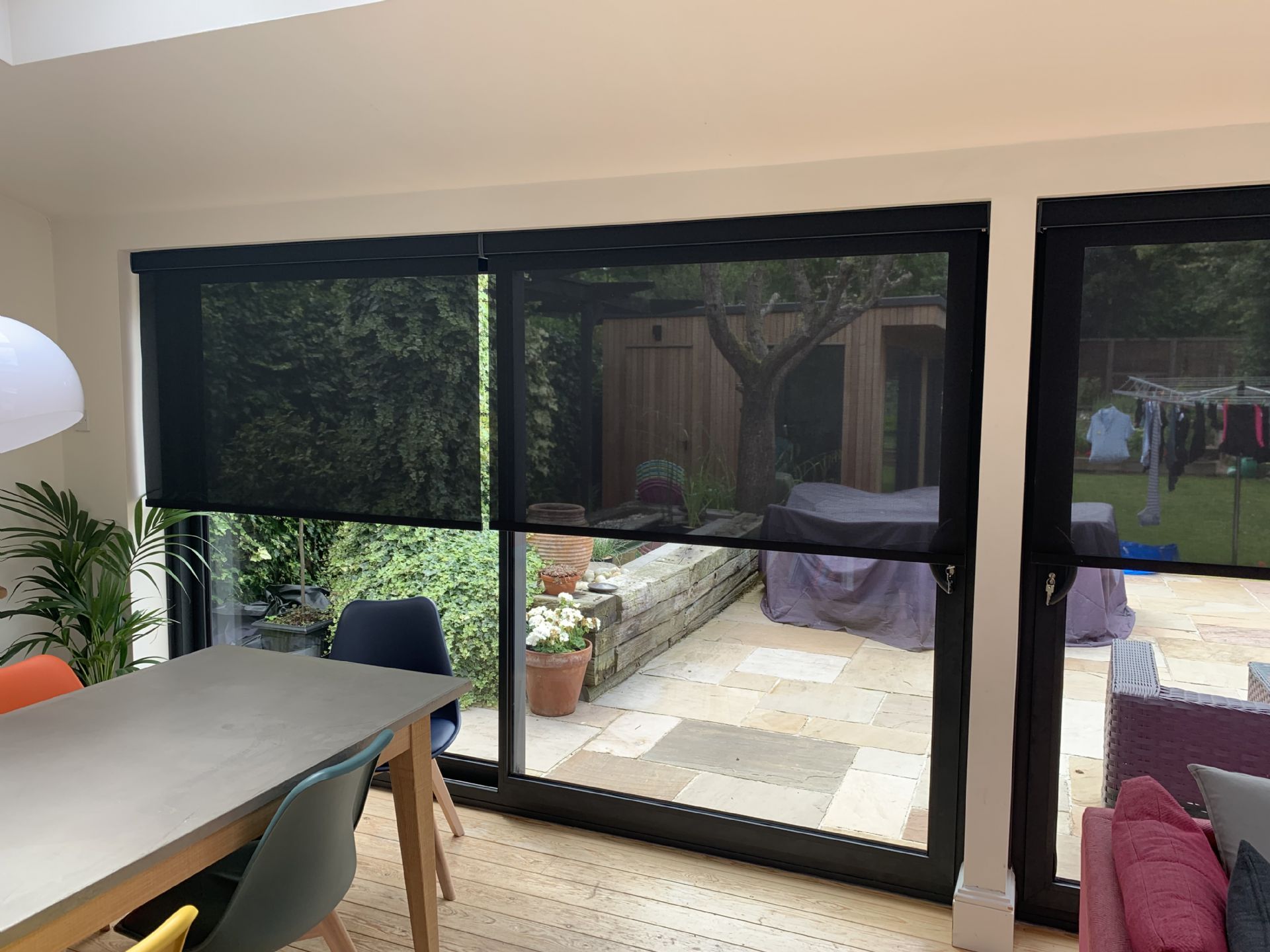
Screen rollers pulled down to reduce glare and heat
Example Two
Mrs. Jones visited our showroom and was instantly captivated by the aesthetic of the Allusions blinds. She had a four-panel bi-folding door in her kitchen.
During our visit to take measurements and provide a quote, we noticed that the doors were facing north, and she wasn't overlooked by any other property.
Despite the bright sunshine on the day of our visit, we observed that the kitchen area was quite dimly lit due to the lack of natural daylight.
We asked Mrs. Jones about her choice of blinds and she explained that it was purely based on aesthetics.
We shared our opinions on her product selection, considering both functionality and aesthetics.
We expressed concern that the blinds would make the already dark room even darker, especially since it was north-facing. We pointed out that light was scarce, and she wouldn’t have any issues with neighbours or sunlight. Her response was that she would pull the blinds back to one side.
We countered that if she pulled the blinds back almost daily, she wouldn’t be able to enjoy the aesthetic she had fallen in love with. The blinds would either be shut at night or pulled back to one side during the day to maximise the amount of light entering the kitchen. While they did have an aesthetic when shut at night, the daytime position would be one that she rarely, if ever, got to see.
Ultimately, Mrs. Jones stood by her decision but acknowledged that she wouldn’t benefit as much from the aesthetic as she had initially anticipated.
SOLUTIONS FOR DOORS
Below, we delve into the various types of blinds that we deem suitable for doors, considering factors such as the direction your doors face, the level of traffic they receive, the presence of young children and pets, and your personal preferences.
If you’re unfamiliar with a product we mention, please refer to the corresponding product pages for detailed information about that specific blind.
Choosing the right blind for your doors inevitably involves some compromise, and we’ll provide insights into all the factors we’ve discussed above for each product.
Allusions
Allusions are designed for doors, and a single blind can be up to 5 meters wide. If your door exceeds 5 meters, it might be possible to install two blinds together. However, there’s a complex discussion to be had about this, which is far too intricate for us to cover on this website.
These blinds are ideally suited for those who need daytime privacy.
North Facing / East Facing:
These can block a lot of natural light compared to other products. If you are north facing, not overlooked, there may be better options, although you can pull back an Allusions blind to one side of the door.
South / West Facing:
They offer excellent filtering of sun glare, protection against fading and heat buildup, and also reduce heat loss.
High Traffic Doors:
These blinds are great for high-traffic doors because you can walk through them.
Child/Pet Friendly:
Generally, yes, they are easy to repair if damaged, but there are always exceptions to the rule.
Doors Open & Breeze:
The blinds can be safely left covering the doors, and they will be virtually silent in any breeze.
Size Restrictions:
Up to 5000mm (5 metres). Remember, if your actual recess opening, measured to within just a few MM is more than 5000mm, then these may or may not work.
Having two blinds in one aperture is possible but has some caveats. The conversation is intricate and easier to explain in person than on a web site.
Visions
Visions are ideally suited for elevations where daytime privacy is a crucial function of the blind. The transparent layers on a Visions are only moderately effective against sunlight, so the direction you face is important.
North Facing / East Facing:
These blinds are perfect for North or East-facing doors because you can roll them up completely to expose the door, maximising natural light. However, if you’re not overlooked, you might want to consider regular roller blinds. You’ll likely use them fully up or fully down, so you won’t necessarily benefit from the intermediate positions offered by Visions.
South / West Facing:
You can overlap Visions blinds in direct sunlight, but there are likely better alternatives.
High Traffic Doors:
During the summer months, when the sun is high in the sky, you won’t need to cover as much of the door area to protect yourself from the sun’s rays. Therefore, a Visions blind can be positioned only partially down, allowing people to pass underneath. Alternatively, you can motorise the blind and control it remotely, especially if you plan to be outdoors for an extended period.
Child/Pet Friendly:
The fabrics are delicate compared to other products and will not withstand rough handling.
Doors Open & Breeze:
The fabrics are delicate and better suited for doors that are not left open. They will not withstand being tossed around in a strong breeze.
Size Restrictions:
We can generally install doors that span up to 2400mm (sometimes wider), so doors are often divided into multiple sections.
For instance, if you have a 5000mm opening, let’s say a 5-panel folding door, we might install one blind covering two panels, another blind covering two panels, and one blind covering the main opening door of the bi-fold doors.
Roller Blinds (including Screen Rollers, Duo Rollers)
Rollers, except for those made of screen roller materials, are not an ideal solution for daytime privacy (see screen rollers for daytime privacy options).
North Facing / East Facing:
These are ideal for North or East facing doors, as you can roll the blind up to completely expose the door itself, maximising natural light.
South / West Facing:
Rollers only need to be lowered a small amount to cut out glare and heat, based on the height of the sun during the year.
High Traffic Doors:
During the summer months, when the sun is high in the sky, you won’t need to cover as much of the door area to protect yourself from the sun’s rays.
Child/Pet Friendly:
During the day, the blinds are usually rolled up or only partially down. However, if you need to let a pet out in the evening, motorisation might be a good option to consider.
Doors Open & Breeze:
Most roller materials, except for screen fabrics, won’t withstand strong breezes. We’ll always recommend the best materials for doors.
Duo Rollers / Screen Rollers:
Screen rollers offer excellent control over sun glare, protection against fading, and are highly durable. They’re also easy to move out of the way on those dull days. Additionally, they provide daytime privacy if needed.
Size Restrictions:
Rollers can reach a width of just under 3 meters, which depends on the materials you select. Typically, we cover the door area with multiple blinds, depending on the door’s width.
DUO & SCREEN ROLLERS
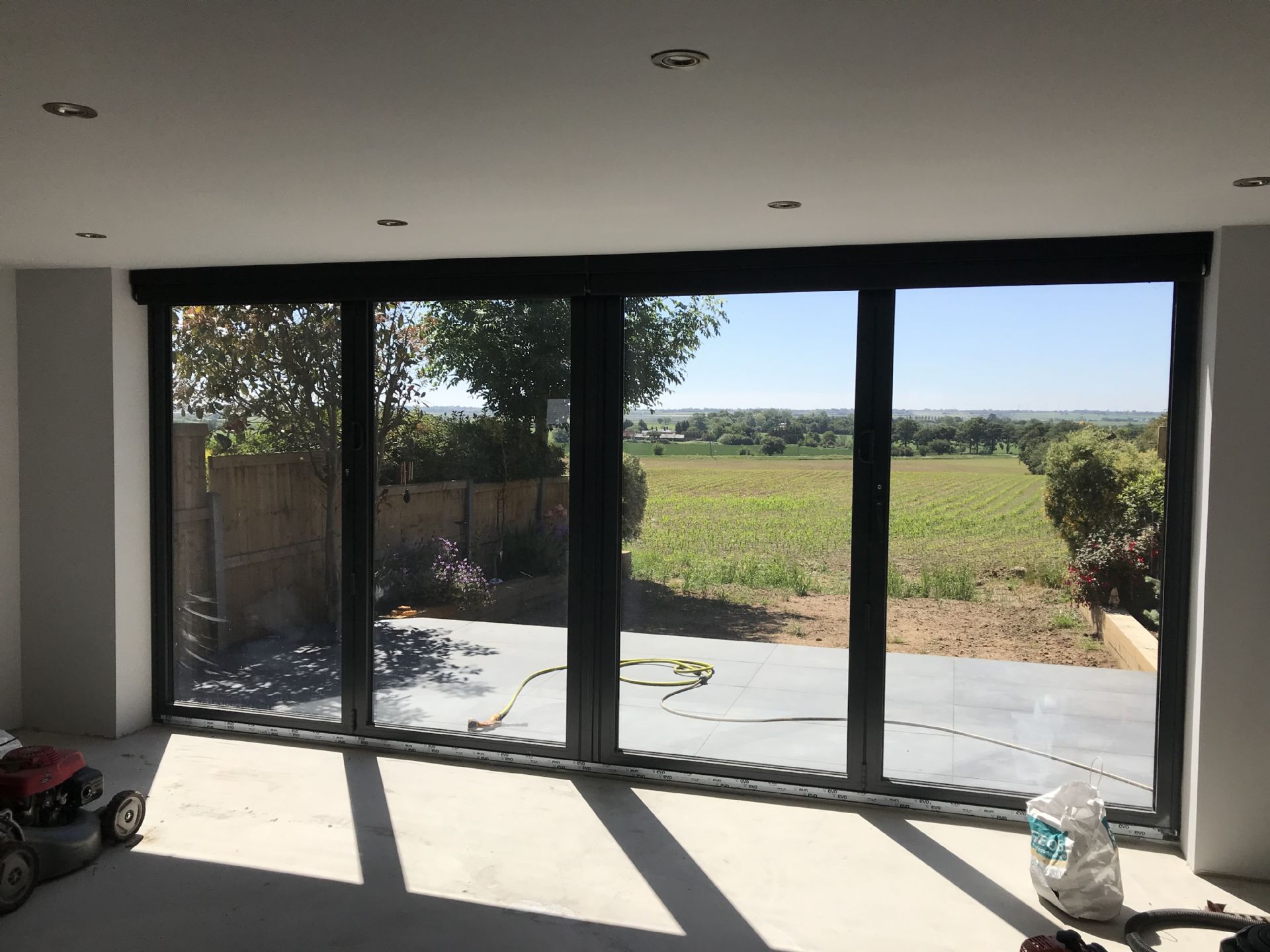
Rollers fully up - out of the way & discrete
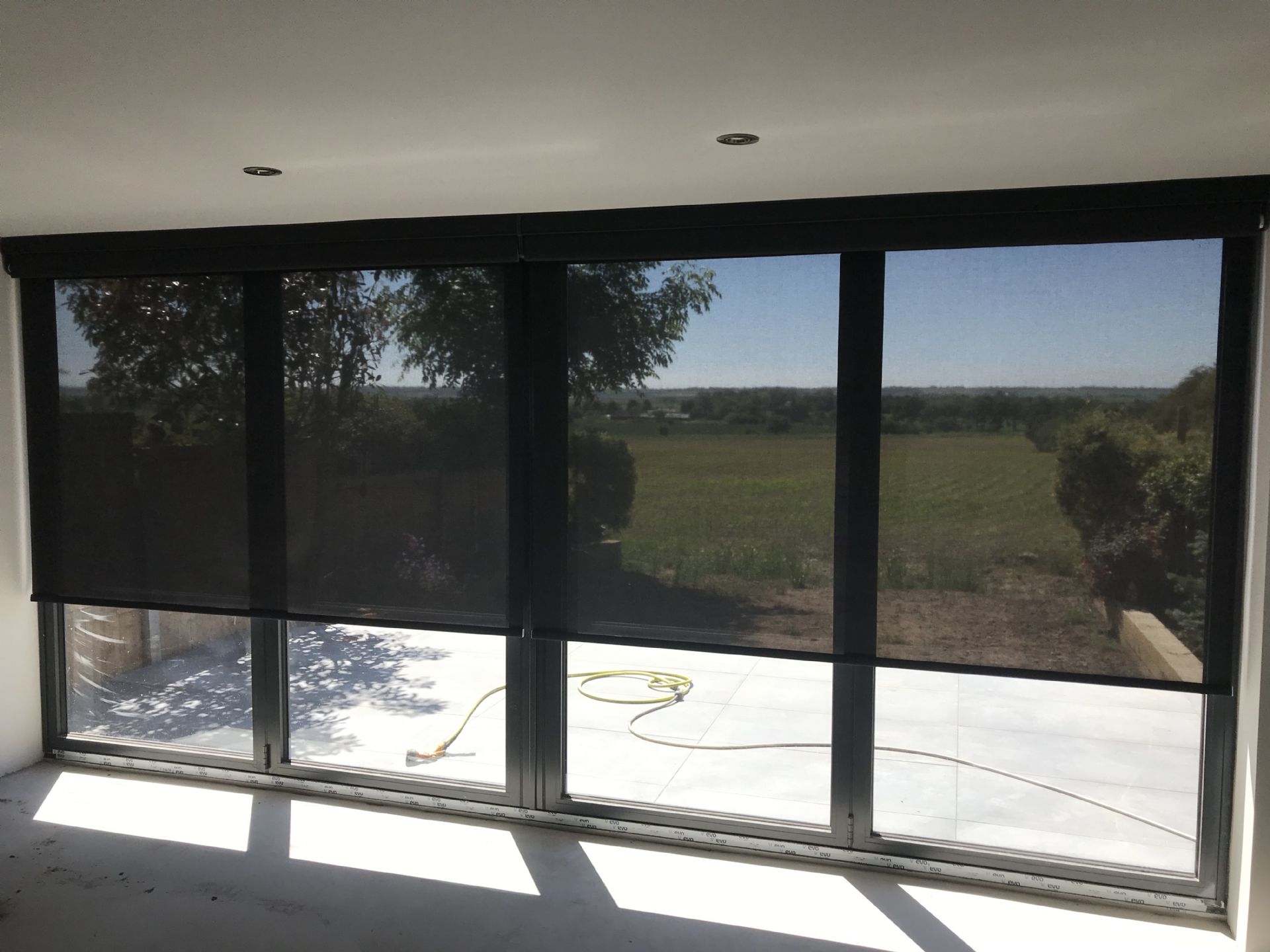
Screen rollers deployed - high performance / privacy for the daytime
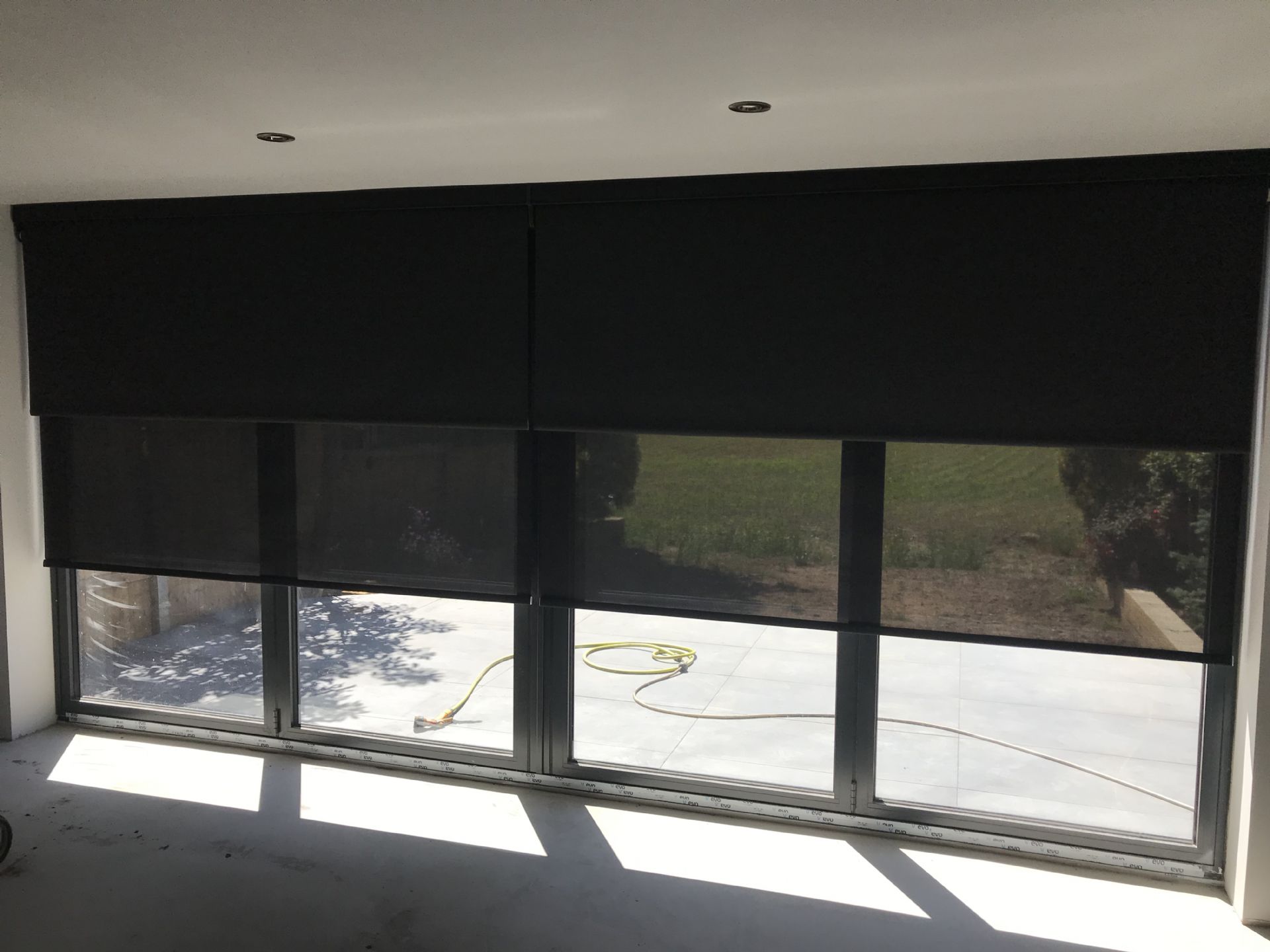
Night rollers and screen rollers in view
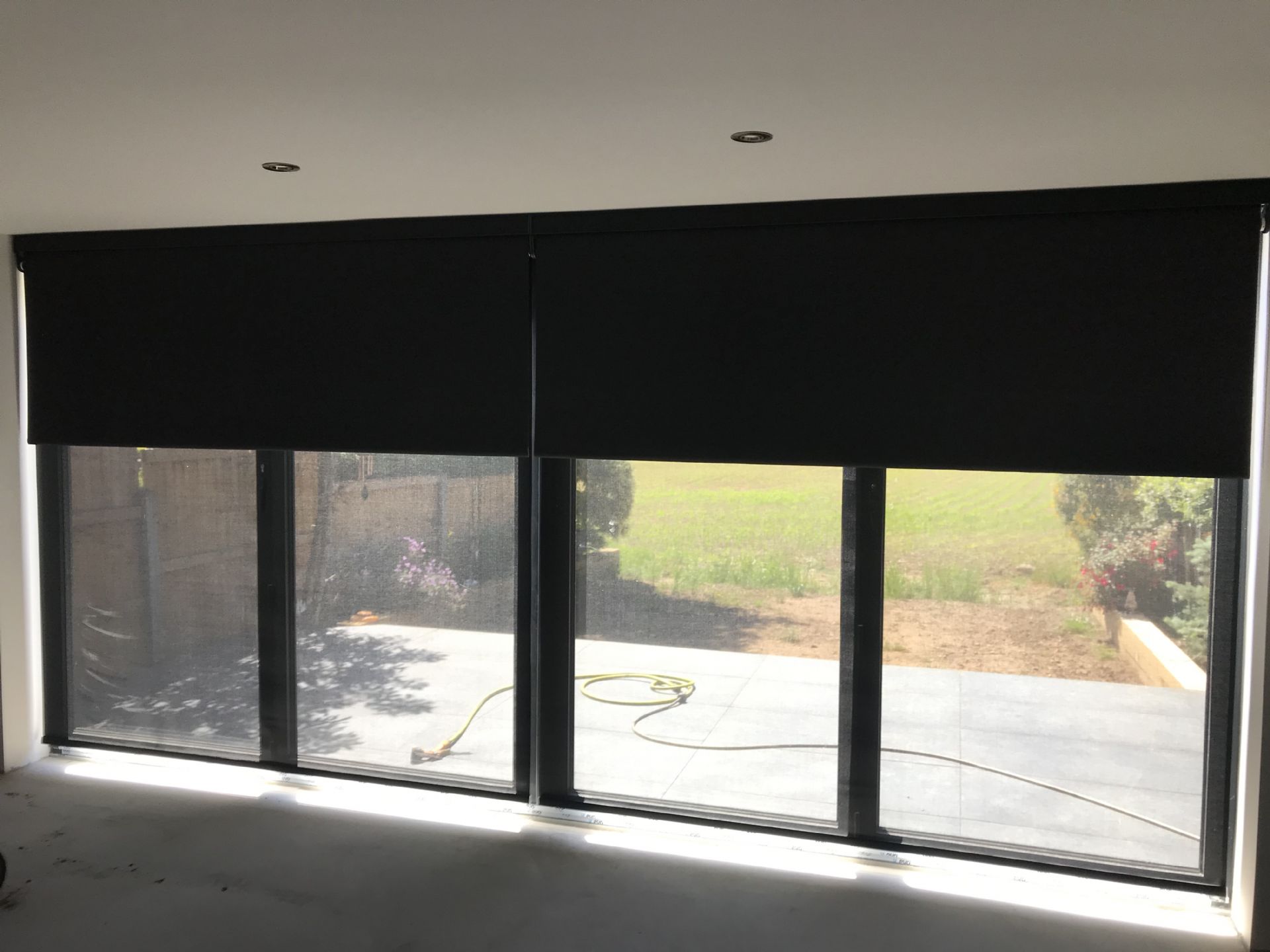
Night roller blinds on view
Vertical Blinds
These are ideal for daytime privacy.
North Facing / East Facing:
These blinds do block a significant amount of natural light. If you face north and your window isn’t overlooked, there might be better options available. However, you can pull back a vertical blind to one side of the door.
South / West Facing:
They offer excellent filtering of sun glare, protection against fading and heat buildup. However, they are only moderately performing in terms of heat loss.
High Traffic Doors:
You can pull the blinds back, either fully, or just enough to walk in and out of a door.
Child/Pet Friendly:
Yes, broadly speaking, since you have to move them aside to open the door.
Doors Open & Breeze:
These will make a lot of noise if they’re moving in a strong breeze.
Size Restrictions:
Up to 5000 millimetres (5 meters) is the maximum aperture size for these blinds. Splitting a wide aperture into multiple blinds is relatively straightforward.
Perfect Fit Pleated or Venetian
Perfect Fit blinds, such as Pleated or Venetian, are mounted onto the doors, unlike those that are installed into the door’s aperture.
Sliding patio doors, however, are not typically suitable for these blinds. They will fit most French doors and a significant portion of bi-folding doors (if you have bi-folding doors, don’t assume they will fit).
The Perfect Fit Venetian is the only option among the two that provides excellent daytime privacy options.
North Facing / East Facing:
These are excellent choices for doors facing north or east.
South / West Facing:
These aren’t necessarily the best choice for South or West-facing doors. What most people overlook is that when the doors are open, since your blinds are physically attached to them, your blinds are now exposed outside. In other words, you’re left without blinds to cover the door area from glare or daytime privacy.
In the case of pleated blinds, if your only access to a back garden is through those doors, and you have pets, you’ll almost certainly be opening those doors when it’s raining! Pleated blinds fabrics don’t want to get wet!
High Traffic Doors:
Ideal for high-traffic doors, these doors are attached directly to the door itself, eliminating any obstructions that could hinder easy access in or out.
Child/Pet Friendly:
Yes, broadly speaking, since they are on the door and can be positioned in a child- or pet-friendly manner.
Doors Open & Breeze:
Both the pleated and Venetian options are under tension, making them very quiet, almost silent, in a gentle breeze.
With Perfect Fit blinds, remember that you won’t have any blinds to use if the doors are left open.
PERFECT FIT SHUTTER LITE (FRENCH DOORS ONLY)
For French Doors only, a final option to conisder is Perfect Fit Shutter Lite.
ROMANS, FULL SHUTTERS, WOOD VENETIANS
We don’t consider Roman, full shutters, or wood venetians as sensible door options for various reasons. However, these blinds can be installed on or across doors. If these are your preferred options, we’d be happy to outline the things you need to know before choosing them.
